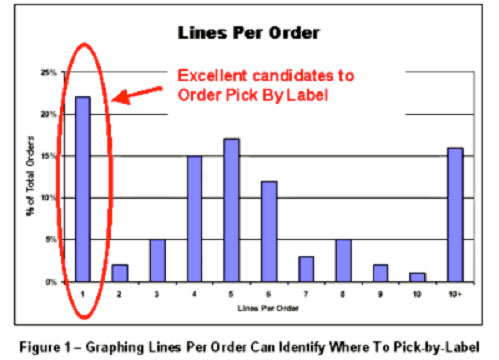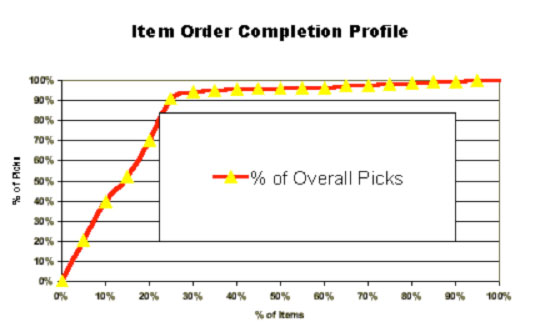Identifying Improvement Opportunities in Your Warehouse Operations
WHAT ARE ACTIVITY PROFILES?
Often in a murder mystery, detectives profile a killer based on the series of clues and facts. This profile gives them an idea as to the character they are looking for and enables them to predict his actions. Not that your warehouse is a suspect in any crime, but profiling its activities can be a great help in understanding its operations. A comprehensive profile based on historical and current data reveals characteristics that allow you to make decisions on storage and handling alternatives, slotting options, pick line requirements, system requirements, pick methods, and order releasing strategies. With more detailed analysis you can even predict how your warehouse will operate, providing you the invaluable opportunity of being able to prepare for the future.
Two main categories of profiles make up a basic warehouse profiling set: customer order profiles and item activity profiles. Customer order profiles represent the outbound activity, i.e., how the customers are ordering the products. Item activity profiles provide insight into viable storing and slotting options for each item within the warehouse.
Customer Order Profiles
The three most basic customer order profiles are defined below.
Order Mix Distribution:
These distributions answer warehouse zoning questions such as “Should my fast, medium, and slow movers be zoned separately in the warehouse?” To answer this question, a distribution of the orders for fast, medium, or slow movers is compared with any combination of the three. If warehouse data indicates that most orders call for a mix of fast and slow movers, zoning the items by velocity will have order consolidation impacts that need to be considered. Order mix profiles are also used to analyze the percentage of order lines for full cartons, broken cartons, or a combination of the two. Analysis of this information provides options on storing full and broken cartons together. The goal is to determine what percentage of your customers is ordering full and broken carton quantities of the same item, before investing time and money in changing the current storage strategy.
Order Increment Distribution:
The order line distribution of the percent of a full carton ordered is beneficial when evaluating if the current packaging is in logical increments for the customer. For example, if results indicate that 90% of the customers are ordering ¸ carton quantities, the warehouse can consider effective alternatives. Options could involve first the supplier by changing the carton size, second the warehouse operations by breaking down cartons at receiving in order to save time during picking, and third, the marketing department by encouraging customers to order in full carton quantities.
Order Lines Distribution:
This distribution of the number of lines contained on each order is important when evaluating operating strategies. A warehouse with mainly one and two line orders would most likely have a very different picking strategy than a warehouse with many large multi-line orders. If your graph looks like figure 1 and you have a significant number of single-line piece-pick orders you may want to consider batch label picking these orders.
Item Activity Profiles
Item Activity Profiles are beneficial when analyzing products’ activities for the purposes of determining storage mode, product slotting, and facility layout options.
There are several types of item profiles, the three most basic are defined next.

The best way to understand how effective profiles can be is by reviewing some examples. A tactical then a strategic profiling approach is discussed next.
Continued on page 2








